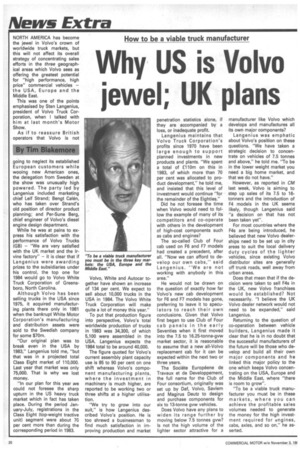News Extra
Page 22

If you've noticed an error in this article please click here to report it so we can fix it.
NORTH AMERICA has become the jewel in Volvo's crown of worldwide truck markets, but this will not affect its overall strategy of concentrating sales efforts in the three geographical areas which Volvo sees as offering the greatest potential for "high performance, high price" commercial vehicles the USA, Europe and the Middle East.
This was one of the points emphasised by Sten Langenius, president of Volvo Truck Corporation, when I talked with him at last month's Motor Show.
As if to reassure British operators that Volvo is not going to neglect its established European customers while wooing new American ones, the delegation from Sweden at the show was unusually high powered. The party led by Langenius included marketing chief Leif Strand; Bengt Calen, who has taken over Strand's old position of director product planning; and Per-Sune Berg, chief engineer of Volvo's diesel engine design department.
While he was at pains to express his satisfaction with the performance of Volvo Trucks (GB) "We are very satisfied with the UK market and the Irvine factory" it is clear that if Langenius were awarding prizes to the subsidiaries under his control, the top one for 1984 would go to Volvo White Truck Corporation of Greensboro, North Carolina.
Although Volvo has been selling trucks in the USA since 1975, it acquired manufacturing plants there only in 1981 when the bankrupt White Motor Corporation's manufacturing and distribution assets were sold to the Swedish company for some $70m.
"Our original plan was to break even in the USA by 1983," Langenius told me, "but that was in a projected total Class Eight market of 110,000. Last year that market was only 75,000. That is why we lost money.
"In our plan for this year we could not foresee the sharp upturn in the US heavy truck market which in fact has taken place. During the period January-July, registrations in the Class Eight (top-weight tractive unit) segment were about 70 per cent more than during the corresponding period in 1983.








































































































